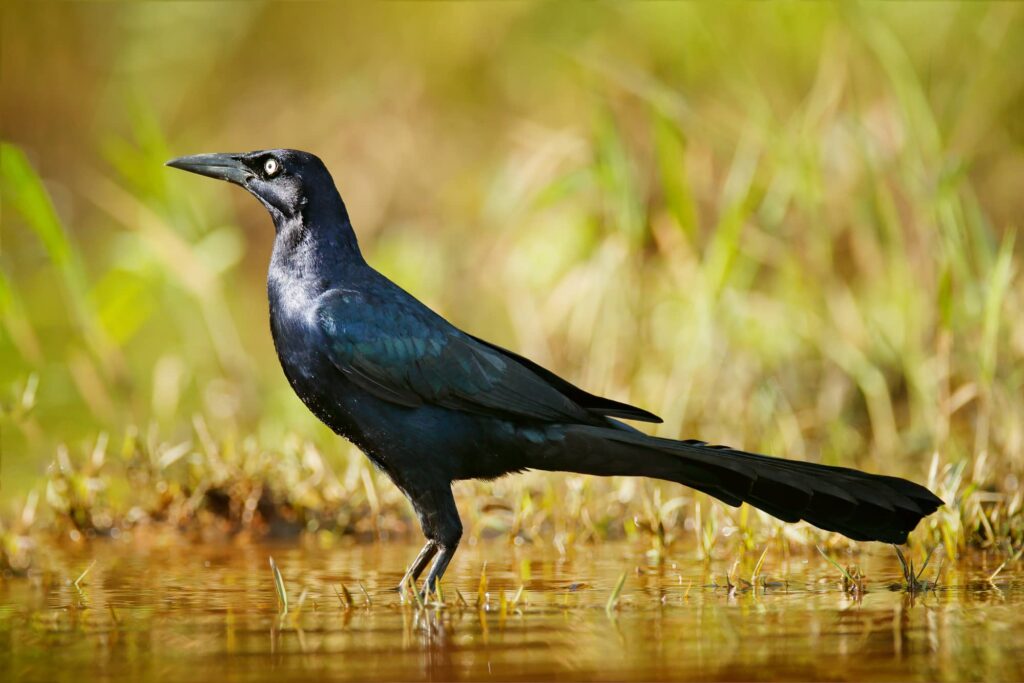Blackbirds are a fascinating family to get to know, and California has ten different species to discover. Some are found mainly in California and not elsewhere; others take a lazy winter vacation in California rather than migrating south again.
These lively birds pack a lot of personality. While their intelligence and behavior may bring to mind members of the Corvid family, like crows and ravens, blackbirds have their own family, the Icteridae.
Not All Black Birds are Blackbirds
You might expect that a family of blackbirds would be named for its black feathers, but when it comes to their scientific name, they’re actually not.
The name “Icterid” means “the jaundiced ones,” which doesn’t sound very flattering! It refers to the flashy yellow feathers that many members of the blackbird family also have.
The Ancient Greeks believed that a yellow-feathered bird could cure jaundice. That folklore association made its way into the scientific name of this new world bird family.
In addition to their bright yellow feathers, many blackbirds have extremely colorful bodies, thanks to their natural iridescence. Their black feathers can show flashes of many other colors, including ranges of blues, greens, and purples.
Blackbirds are good at finding trouble, whether with humans or each other. They scavenge food, expand into urban areas, and shoulder their way into bird feeders.
Some even lay their eggs in other birds’ nests! Others practice social domination to get the best breeding grounds.
Let’s get to know California’s smart, social, and sassy blackbirds!
Yellow-Headed Blackbird

- Length: 8.3-10.2 inches (21-26 centimeters)
- Weight: 1.6-3.5 ounces (44-100 grams)
- Wingspan: 16.5-17.3 inches (42-44 centimeters)
Males have vivid yellow heads and chests that contrast with their sleek black bodies. They have white wing patches at the bend of each wing.
Female blackbirds sport a duller shade of yellow and have brown bodies rather than black.
These noisy birds make some unusual sounds–one of their songs has been described as sounding like a chainsaw! They also make clacking noises, rasps, and trills. When they’re flying, their call sounds like kuduk or kek.
Western Meadowlark

- Length: 6.3-10.2 inches (16-26 centimeters)
- Weight: 3.1-4.1 ounces (89-115 grams)
- Wingspan: 16.1 inches (41 centimeters)
Western meadowlarks have bright yellow undersides with a distinctive black V at the breast that turns gray in winter. The rest of the body has detailed patterning in brown, black, and cream. The head is striped in dark brown and cream, and the outer tail feathers look white in flight.
The Western meadowlark was studied in California in 1914 to determine whether it could be considered an agricultural pest. This was one of the first ever studies of a bird’s diet for this purpose.
Observers discovered that while the Western meadowlarks do eat grain, they also play a critical role in protecting crops by eating insects and limiting their populations.
Western meadowlarks prefer open grasslands, so they’re not as common a sight at birdfeeders.
Scott’s Oriole

- Length: 9.1 inches (23 centimeters)
- Weight: 1.1-1.4 ounces (32-41 grams)
- Wingspan: 12.6 inches (32 centimeters)
Males have a velvety black head, back, and chest, and white wing bars. Their undersides are a bright lemon yellow, and their tails are black and yellow.
Females are a duller yellow than the males, and their backs are olive green. They have dark wings with two white wing bars and stippled heads.
The juvenile birds take after the females but have duller coloration.
This beautiful blackbird has intricate relationships with two other organisms: the yucca plant and the Monarch butterfly.
The yucca plant provides many things for the Scott’s oriole: nectar from its flowers for food, fibers from its leaves for a nest, and a home, as it hangs its nest from the living plant.
The Scott’s oriole also preys upon Monarch butterflies. Even though Monarch butterflies are toxic to many species, thanks to their diet of poisonous milkweed, Scott’s orioles can actually taste how toxic an individual Monarch is and determine whether or not its abdomen is safe to eat.
Bullock’s Oriole
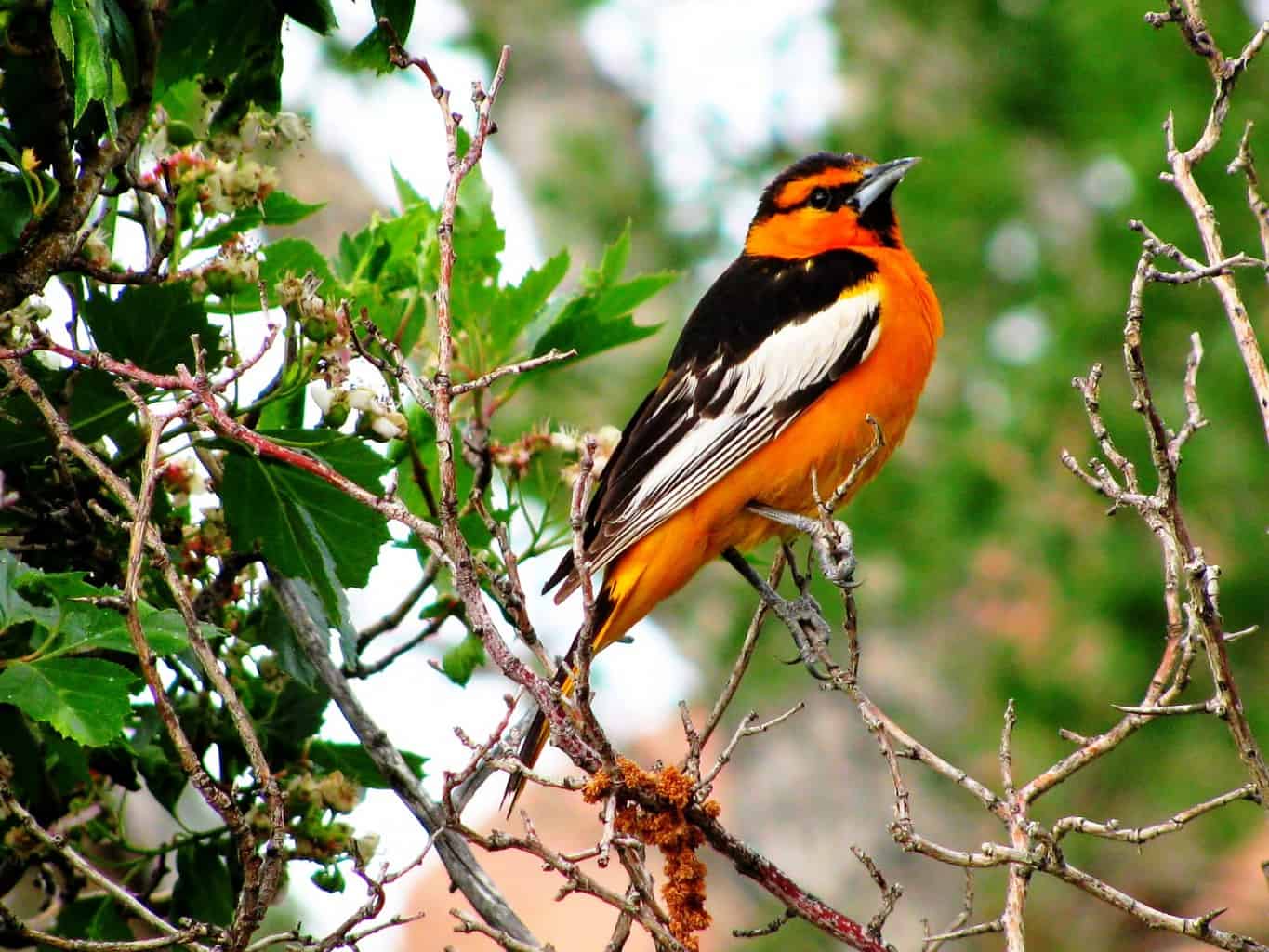
- Length: 6.7-7.5 inches (17-19 centimeters)
- Weight: 1.0-1.5 ounces (29-43 grams)
- Wingspan: 12.2 inches (31 centimeters)
Adult males have bright orange bodies with large white patches on their wings. Their backs are black, and their faces are orange, with a black throat and a black line through the eye.
Females and juveniles have a grayish body with a muted yellowish head and tail and white-edged wing coverts. The young males will also display a black throat patch.
This distinctive oriole is always on the hunt for its next sugar high. They’ll eat fruit, sip jelly mixes, drink flower nectar, and even shoulder their way into hummingbird feeders if there’s a perch handy.
There are, however, specialty oriole feeders you can get to serve them sugar water mixtures directly.
Whatever sweets you leave for the orioles, remember to change and clean everything frequently to avoid dangerous mold and bacteria.
Hooded Oriole
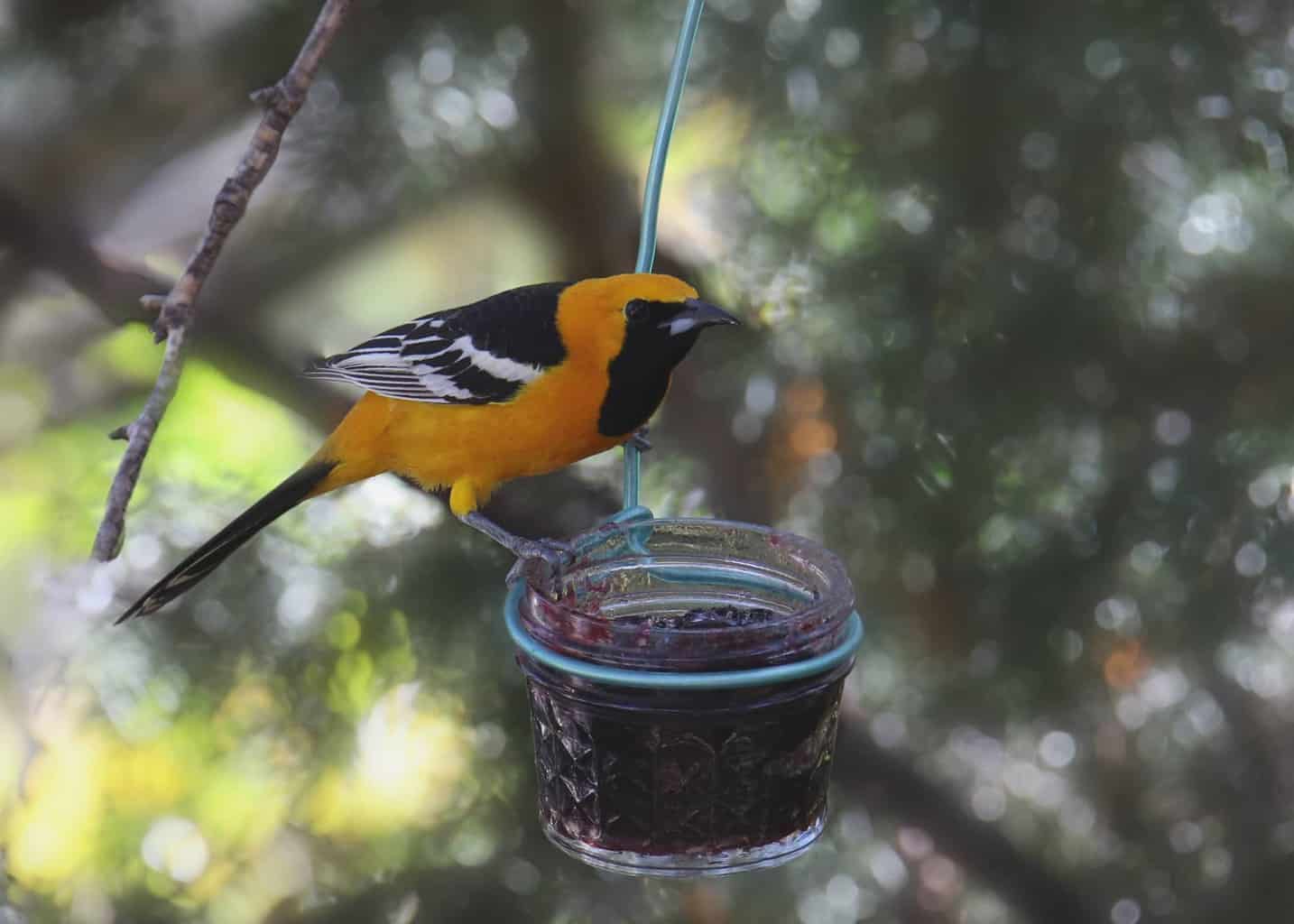
- Length: 7.1-7.9 inches (18-20 centimeters)
- Weight: 0.8 ounce (24 grams)
- Wingspan: 9.1-11.0 inches (23-28 centimeters)
The adult males are vibrantly colored, ranging from a flame orange to a bright yellow. Their wings, throats, and tails are intensely black. They also have black mask and bib markings, and white wing bars.
Females are predominantly a subdued lemon yellow blended with light gray. They have gray backs and white wing bars that echo the males. Overall, immature males are similar to females, but they share the black throats of adult males.
Do you love to sew, or know someone who does? The Hooded oriole does too! This bird sews a hanging nest in palms. In California, they’re known as “palm leaf orioles” for this reason.
Hooded orioles will sometimes stay in southern California all year long rather than migrating. They enjoy the ornamental palm trees and hummingbird feeders that are increasingly available to them. You can attract birds to your backyard with sugar water.
The oldest ever Hooded oriole was found right in California. It was a male banded in 1967 and discovered again in 1972, aged at least six years.
Tricolored Blackbird
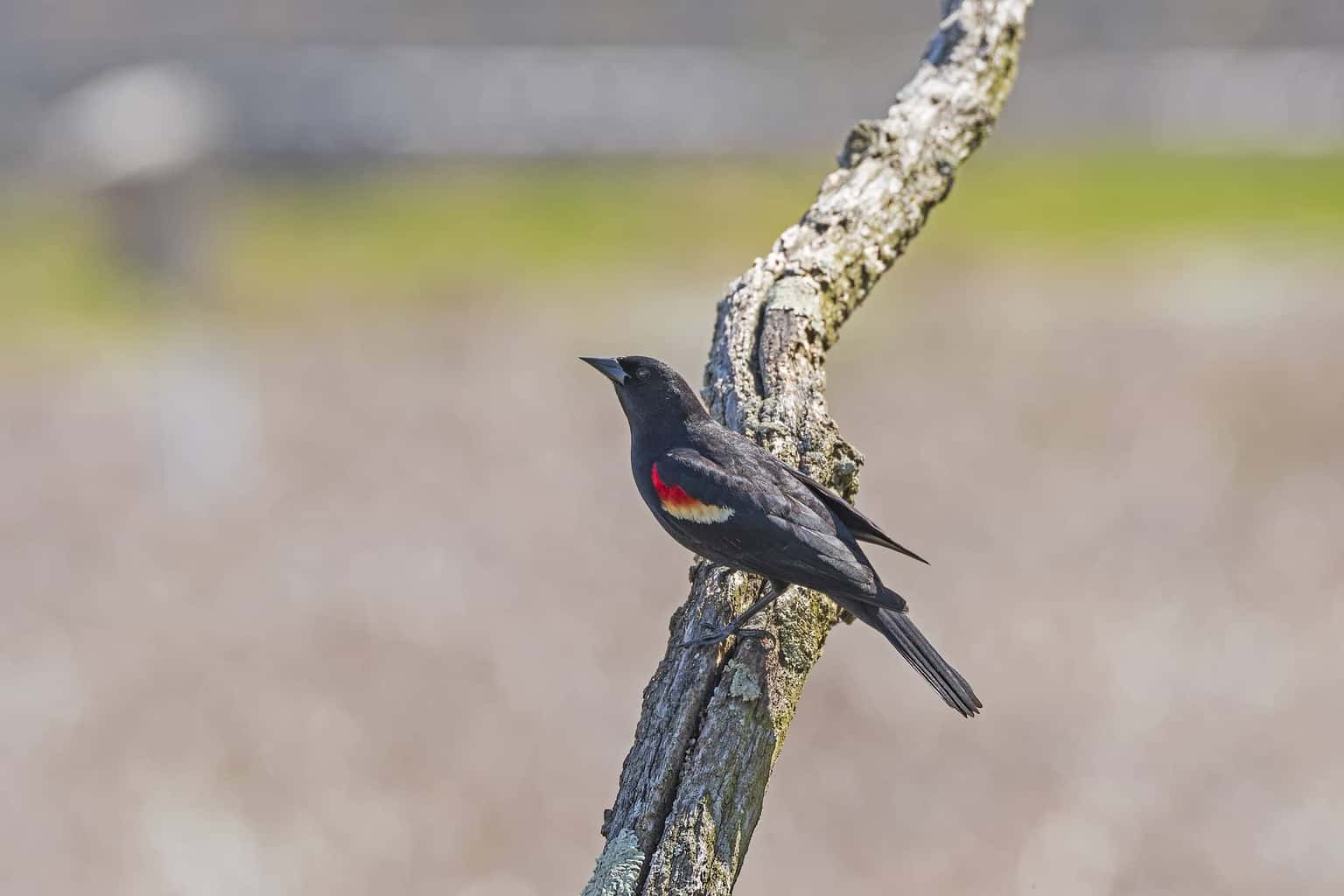
- Length: 7.1-9.4 inches (18-24 centimeters)
- Weight: 1.4-2.6 ounces (40-75 grams)
- Wingspan: 10.2-13.0 inches (26-33 centimeters)
Breeding adult males are glossy black all over, with a distinctive red shoulder patch underlined with white.
Outside the breeding season, brown fringing overtakes the feathers and makes the coloring much more subdued, giving the male a dusty appearance.
Females have a mottled brown and cream underside and dark gray-brown backs with a notable cream-colored eyebrow.
The Tricolored blackbird is a species that lives almost entirely in California– at least 99% of its population is there. But it is struggling due to habitat destruction. These birds need their preferred habitat, wetlands, to nest and raise their young.
Because those wetlands are being destroyed, the Tricolored blackbirds have been inhabiting other areas, like wheat and triticale fields. But farmers typically harvest their grain before the chicks have left the nests, resulting in the loss of tens of thousands of birds.
Over just six years, the Tricolored Blackbird population has declined 44%.
The California Audubon Society is working with farmers and state organizations to protect these nesting sites and save the Tricolored blackbird.
Red-Winged Blackbird
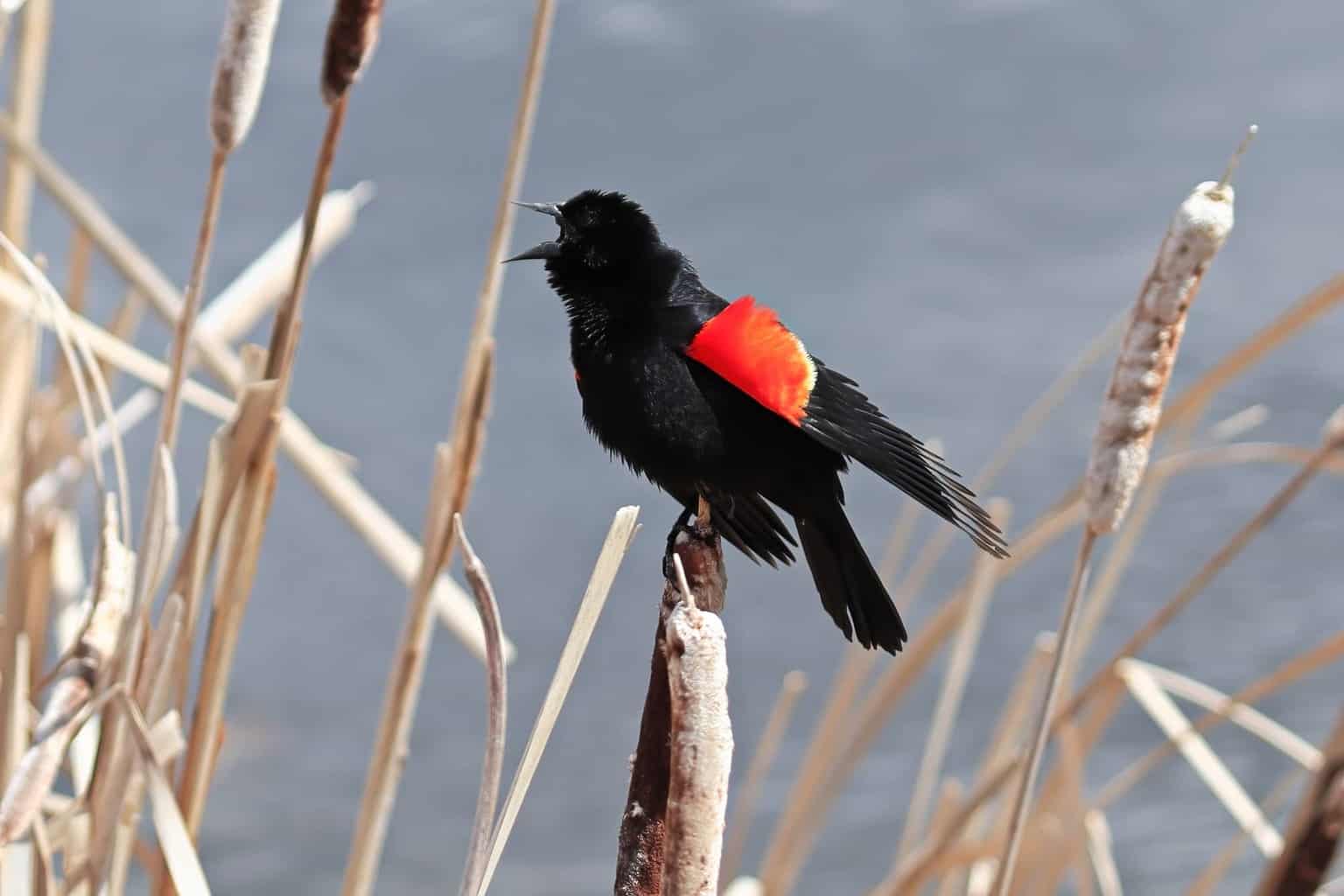
- Length: 9 inches (23 centimeters)
- Weight: 1.1-2.7 ounces (32-77 grams)
- Wingspan: 12.2-15.8 inches (31-40 centimeters)
The males are striking in appearance, with glossy black bodies and a red and yellow patch on the curve of each shoulder.
Female Red-winged blackbirds are dark brown overall, with clean white streaks, a pale breast, and a white eyebrow.
Californian birders have to stay sharp: this blackbird species looks very similar to the Tricolored blackbird. The key difference between them is that while the Tricolored blackbird has a red shoulder patch with a white band underneath, the Red-winged blackbird’s shoulder patches are red and yellow.
This common blackbird favors marshy areas, wetlands, and standing water, where they build nests in dense vegetation. Even a small ditch of water can be enough to satisfy their craving for an aquatic oasis! The female prefers to hide among cattails and other types of vegetation rather than showing off the way the male does.
These blackbirds are very aggressive in the breeding season, defending their nest against intruders larger than themselves.
Brown-Headed Cowbird

- Length: Male – 7.5-8.7 inches (19-22 centimeters), Female – 6.3-7.9 inches (16-20 centimeters)
- Weight: Male – 1.5-1.8 ounces (42-50 grams), Female – 1.3-1.6 ounces (38-45 grams)
- Wingspan: Male – 14.2 inches (36 centimeters), Female – 12.6-15.0 inches (32-38 centimeters)
Males have glossy black feathers all over their bodies and a deep brown head that can look black from a distance.
Females are entirely brown but lighter on their heads and undersides. They have dark eyes and slight streaking on their bellies.
This chunky blackbird’s most distinctive trait is that they are brood parasites: that is, they lay their eggs in other birds’ nests. They then make their chicks someone else’s problem without wasting energy building nests!
What’s really interesting, though, is that not all birds helplessly raise the Cowbirds’ chicks as their own. Some species have learned to recognize the intruder’s eggs and created defenses against them, such as puncturing the eggs or building a new nest.
You can attract them to your backyard feeders with seeds and grains.
Brewer’s Blackbird
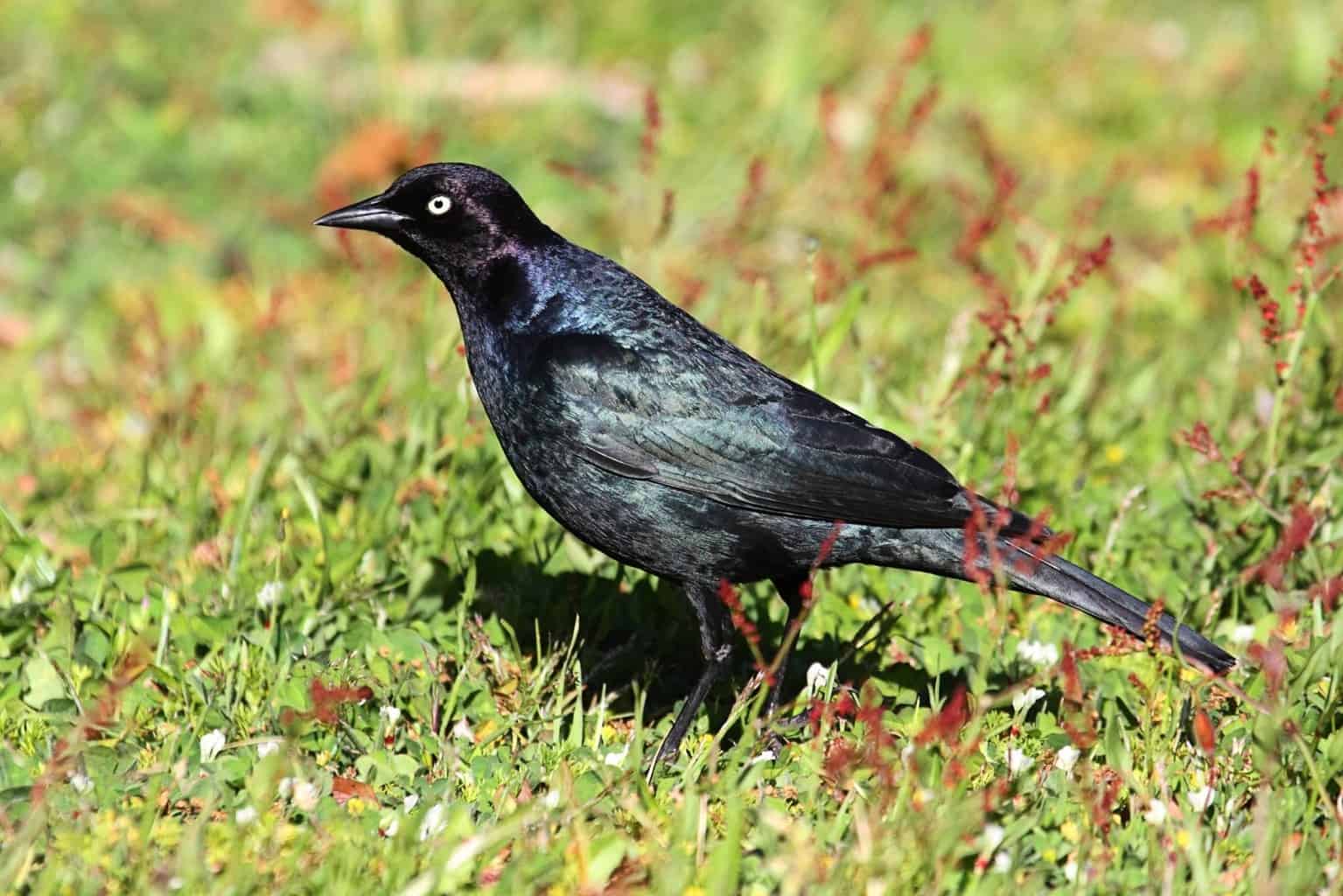
- Length: Male – 8.3-9.8 inches (21-25 centimeters), Female – 7.9-8.7 inches (20-22 centimeters)
- Weight: Male – 2.1-3.0 ounces (60-86 grams), Female – 1.8-2.4 ounces (50-67 grams)
- Wingspan: Both Sexes – 14.6 inches (37 centimeters)
Males are iridescent black, ranging from blues at the top of their head down to greens lower on their bodies. They have striking yellow eyes.
Females are brown throughout but darker on their tails and wings. They have dark eyes. Juveniles will look similar to the females but with washed-out coloration.
The oldest Brewer’s blackbird ever found was a California resident. He was more than 12 years and 6 months old. It must have been that healthy California lifestyle!
Brewer’s blackbirds are sometimes thought to be agricultural pests because they eat grain in wheat fields, but they’re actually essential for controlling populations of pest insects. They eat a variety of troublesome insects, including tent caterpillars, termites, and weevils. They live in a variety of habitats, including marshes, forests, meadows, and grasslands.
If you play the popular bird-themed game Wingspan, you know that Brewer’s blackbird is named for a 19th-century ornithologist and zoologist, Thomas Mayo Brewer.
You can attract them to your backyard with seeds such as sunflower, cracked corn, and millet.
Great-Tailed Grackle

- Length: 15-18 inches (38-46 centimeters)
- Weight: 3.7-6.7 ounces (105-190 grams)
- Wingspan: 18.9-22.8 inches (48-58 centimeters)
Males are black all over, including their bills and legs. Their feathers are iridescent, and they have vivid yellow eyes.
Females are dark brown all over, with lighter undersides and a buff-colored throat. They have dark eyes with a stripe above them. The immature birds share the female’s coloration, with streaking on their underparts.
Great-tailed grackles are incredibly smart and social birds. They’ve been demonstrated to recognize individual human scientists during research projects and give special calls to them.
These brash blackbirds will roost together in enormous flocks of up to 500,000 birds, staying together in roost trees that allow them to enjoy each others’ company, loudly! It’s also common to find them near people in parks, farms, and neighborhood backyards.
A Special Mention
There’s one more bird that’s not officially a California blackbird, but it does show up occasionally: the Common grackle. Although this bird doesn’t usually range west of the rocky mountains, it has been expanding further and further west in recent years, and it is sometimes spotted in California.
But if you see a grackle in California, it’s much more likely to be the Great-tailed grackle than the Common grackle–which isn’t all that common in California!
Concluding Thoughts
California is well-situated to play host to many species of blackbirds. From the unique Tricolored blackbird to the sugar-hungry orioles to the grackles cozying up to humans in urban environments, blackbirds have made themselves at home in the Golden State.
These gregarious birds can offer plenty of entertainment while birding or at the feeder. Enjoy their antics, and happy birding!

